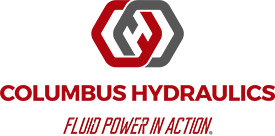How do you currently specify your hydraulic cylinders? Do you base your choice off of the specific needs of your application, or do you pick an “off the shelf” model and try to make it work? If you’re the latter, then you could be missing out on the true potential of hydraulic cylinders.
Widely used across various mobile and industrial applications, hydraulic cylinders are often the go-to power solution for enhanced performance, energy efficiencies and precision control. However, if you don’t specify the right cylinder, you could experience a number of problems, including:
- Process inefficiencies
- Performance losses
- Complete or premature failure
- Difficult installation/maintenance
Any of the above could seriously halt or harm an operation, leading to lost capital and system-wide inefficiencies.
How Do I Get the Right Hydraulic Cylinder?
Rather than suffer through the common issues with standard cylinders, it’s best to do a little leg work upfront – or let a knowledgeable hydraulics expert assist you to ensure you get the best design possible. That all starts with asking the right questions.
By talking through the key design aspects of your hydraulics, you can enable higher efficiencies, improve system performance and enhance cylinder reliability. Here are the questions to ask:
1 – What specific task does the cylinder need to do?
The number one thing that you need to know before specifying a hydraulic cylinder is what the application is. That way, you can figure out what is required of the cylinder to meet that application’s needs.
Your application will influence everything about the design of the cylinder. For instance, if you only need to push or pull in a single direction, then a single action cylinder may be right for you. If you have a more complex operation where you need to both push and pull a load, then a double action cylinder is the way to go.
Thoroughly understanding your application can mean the difference between a highly reliable and efficient cylinder, and an underperforming cylinder that fails early.
2- What are the forces involved?
Multiple forces can exist within a system, each one affecting a cylinder differently. Suppose your cylinder is not designed to properly deal with these forces at their exact magnitudes. In that case, your cylinder is likely to break down more than usual in the field, shortening the life of your design.
Common forces to keep track of include:
- Tension and compressive forces
- Forces originating from the load being moved
- Supply pressure
3 – What’s the distance the cylinder needs to travel?
How far your cylinder needs to travel affects more than just your piston rod. In order to properly size each of the individual components of your cylinder, you need to know the required stroke distance of the device.
4 – What hydraulic fluid do I need?
Different applications require different hydraulic fluids. Typically, hydraulic fluids are broken down into one of three types: petroleum, mineral-based or water-based.
Depending on the type of hydraulic fluid that you are working with, your cylinder may require additional components or a special seal package.
5 – What kind of environment will the cylinder be in?
Extreme hot or cold environments add additional demands to the design of your cylinder than if you were operating in a temperate climate. Work by the ocean or need to spray down your equipment? Your cylinder design needs to be able to handle that.
Whether it is water from a washdown or process dirt from the factory floor, foreign material and particulate can be a big problem if it gets inside your cylinder. Any particles or blockage that work their way in will impact the integrity of your cylinder and its shafting. If this might be an issue, consider adding a scraper to your design.
6 – How will the cylinder be mounted?
How you mount a cylinder matters. Cylinder mounting can affect the performance and reliability of the device, either causing the hydraulics to be a seamless part of the system or adding extra stressors every time the piston moves.
Designing a cylinder so that it easily mounts onto a system will make it easier to install the cylinder, as well as do any maintenance work later on. Your operators and technicians will thank you.
7 – What additional features do I need?
Most every application has some sort of special requirements. Maybe you need added cushioning, or some means of deceleration so that the cylinder does not impact the rest of a highly sensitive system. Or maybe you have multiple cylinders working together in a master/slave set and your cylinder needs to synchronize with other cylinders in the set. Position sensing technology or “smart” cylinders may also be an option for more precision-based applications.
In addition to the above, additional questions may arise based on your specific needs and your supplier’s experience. This is where having a supplier with experience in your industry or application can prove invaluable. A quality supplier with a history of creating innovative cylinder designs will be able to draw from their experience and further tailor a solution to your unique operation.
Columbus Hydraulics: The Leader in Hydraulic Cylinders
Here at Columbus Hydraulics, we specialize in working with our customers to guarantee that they get the right cylinder for the job. With the combination of our quality base cylinder designs, technical expertise and custom hydraulics experience, we can help you find the right solution no matter your industry or application.
That’s why we recommend working with our experts from the get-go, so that we can “own the design” of the cylinder and help streamline your experience. After analyzing your operation, we can create a custom cylinder that best fits the needs of your unique application.
Ready to talk through the Hydraulic Cylinder that is right for you? Contact us today.


